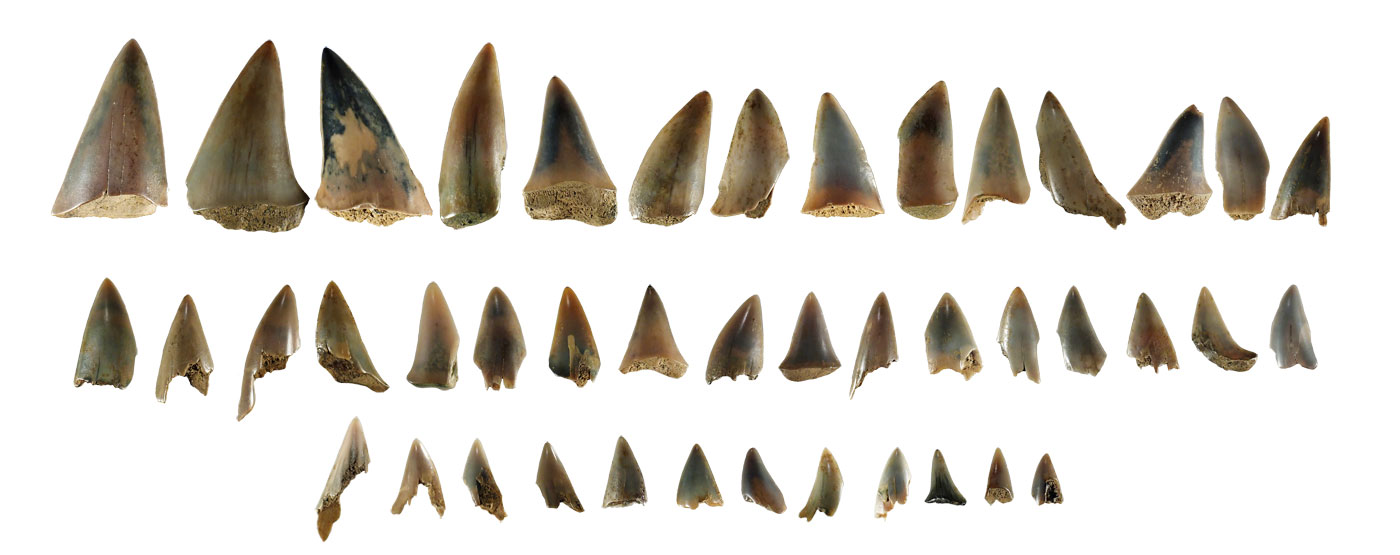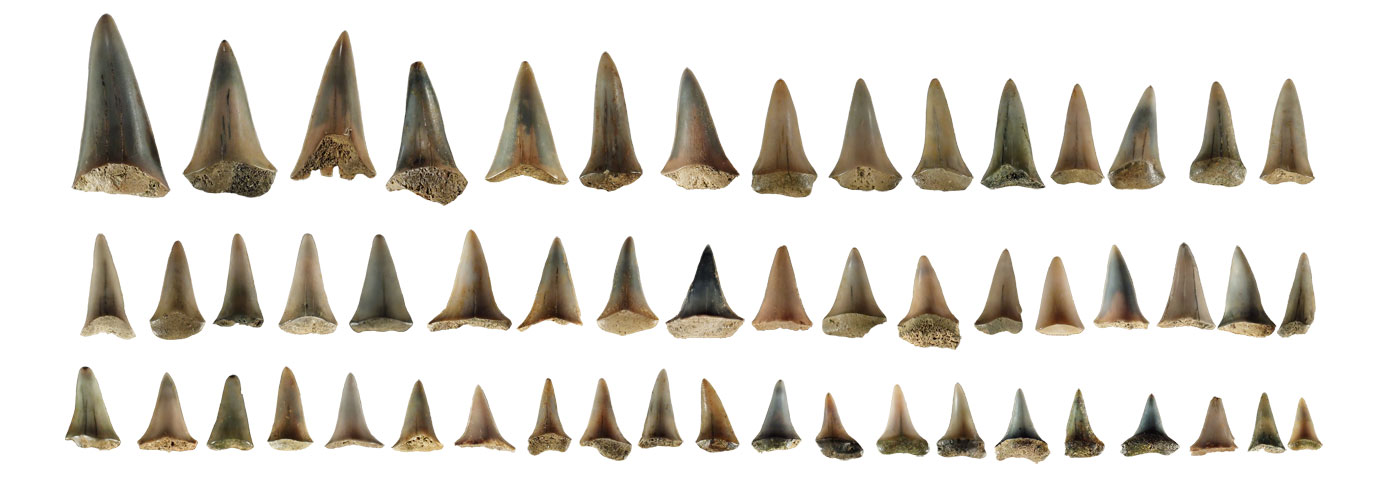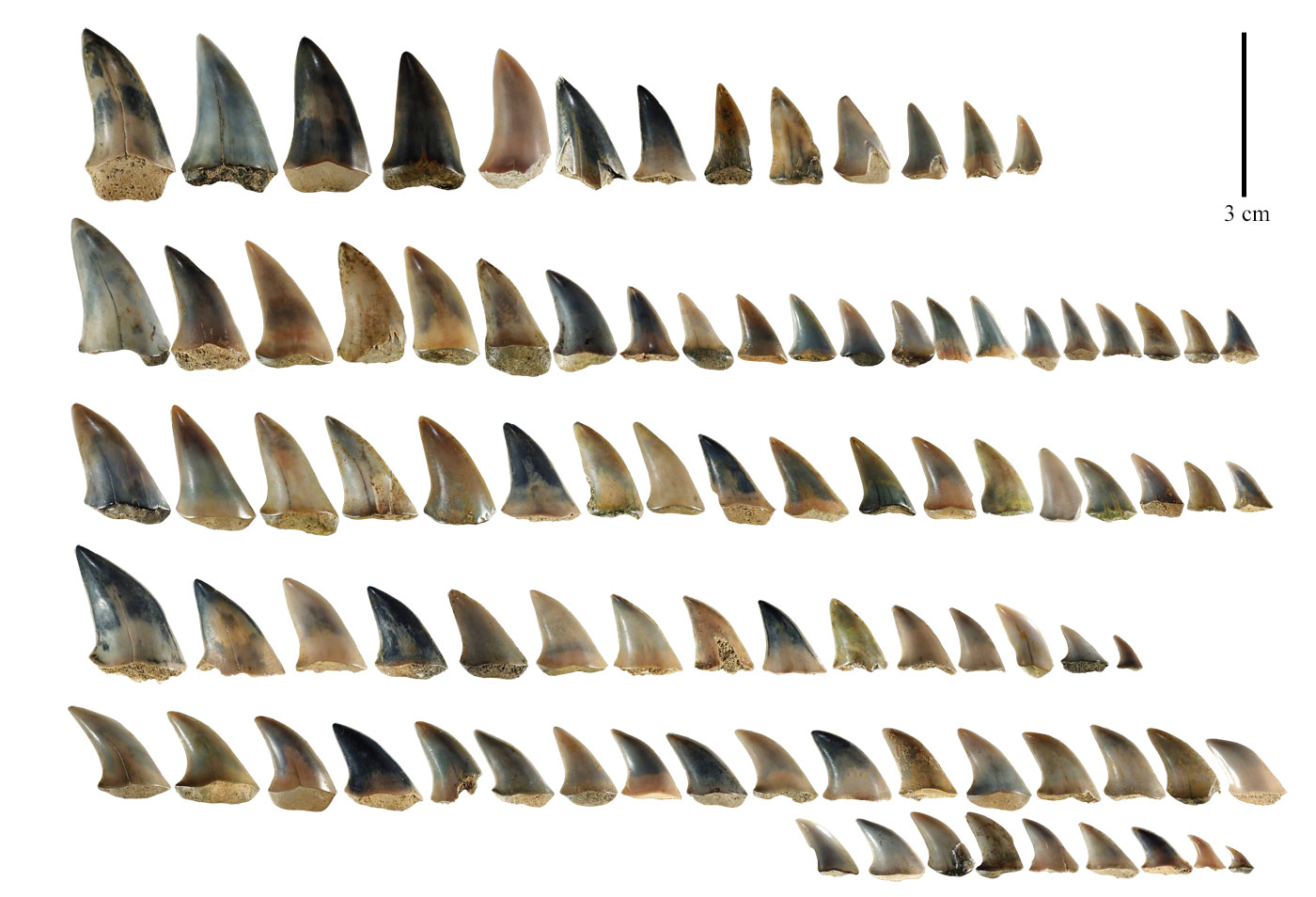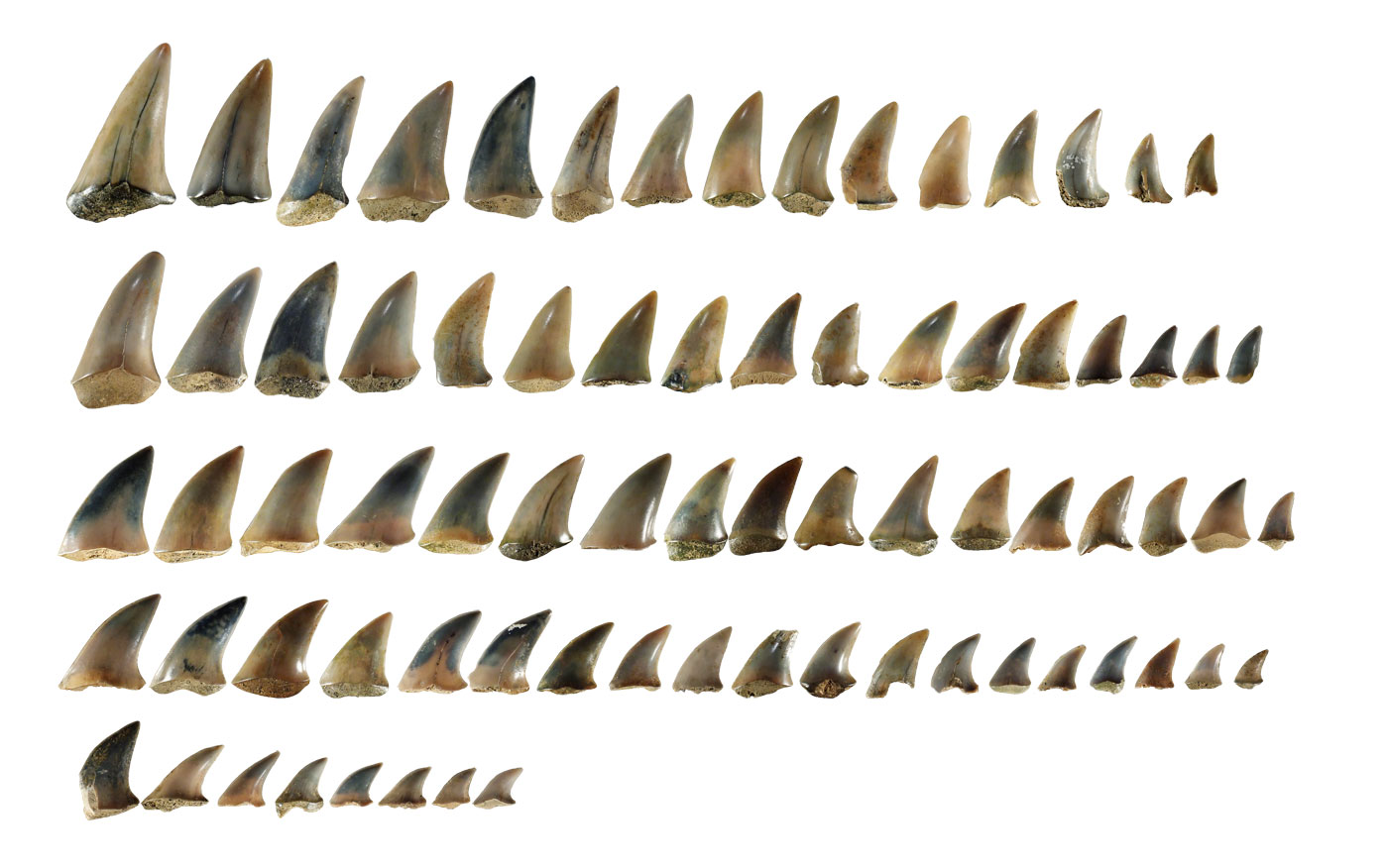| Sekino-hana of the Hokuriku Group, Ishikawa Prefecture is known for its abundance of Middle Miocene shark fossils, although they are not well preserved. This locality has produced many species of fossil sharks. We focused on the relatively abundant "Isurus" planus and Carcharodon hastalis,. By comparing the occurrence of these two shark fossils, we can determine whether the dental type of "Isurus" planus is monognathic or dignathic hetrodonty. If the teeth are diagnathic, we expected to be able to determine whether the lower teeth are similar to the lower teeth of Carcharodon hastalis. |
| (1) Is the dentition of "Isurus" planus monognathic heterodonty or dignathic heterodonty? |
| We examined the number of shark fossils of both species collected between 1998 and 2020. a) The number of upper teeth of Carcharodon hastalis is 43. Plate 1. b) The number of presumed lower teeth of Carcharodon hastalis is 54. Plate 2. c) The number of teeth of "Isurus" planus is 169. Plate 3a, 3b. The number of upper teeth of Carcharodon hastalis is 43, and if we add the number of upper teeth of "Isurus" planus (169) to the number of upper teeth of Carcharodon hastalis, the total number is 212.This number is approximately 3.9 times larger than the number of presumed lower teeth of Carcharodon hastalis 54. Based on the results of this study, it was concluded that "Isurus" planus does not have lower teeth of the clutching type, as is the case in Carcharodon hastalis and the tooth type of "Isurus" planus is very likely a monognatic heterodonty. In addition, there are very few unknown teeth in the tooth samples obtained from this locality. |
| Plate 1. |

| Plate 2. |

| Plate 3a. |

| Plate 3b. |

| (2) In the teeth of Isurus paucus, there is a difference in the labio-lingual flexion between the upper
teeth and the lower teeth. |
| Are such differences in flexion also present in the upper teeth and lower teeth of "Isurus" planus? |
| Examination of 169 teeth of "Isurus" planus revealed no clear labio-lingual flexion differences that would allow for
a distinction between the two types. This indicates that the dental type of "Isurus" planus is a cutting-cutting type dental morphology. |
| (3) Estimation of the dentition of "Isurus" planus with reference to the dentition of Isurus oxyrinchus. |

Jul. 08, 2023 ver. 1: Jun. 08, 2023